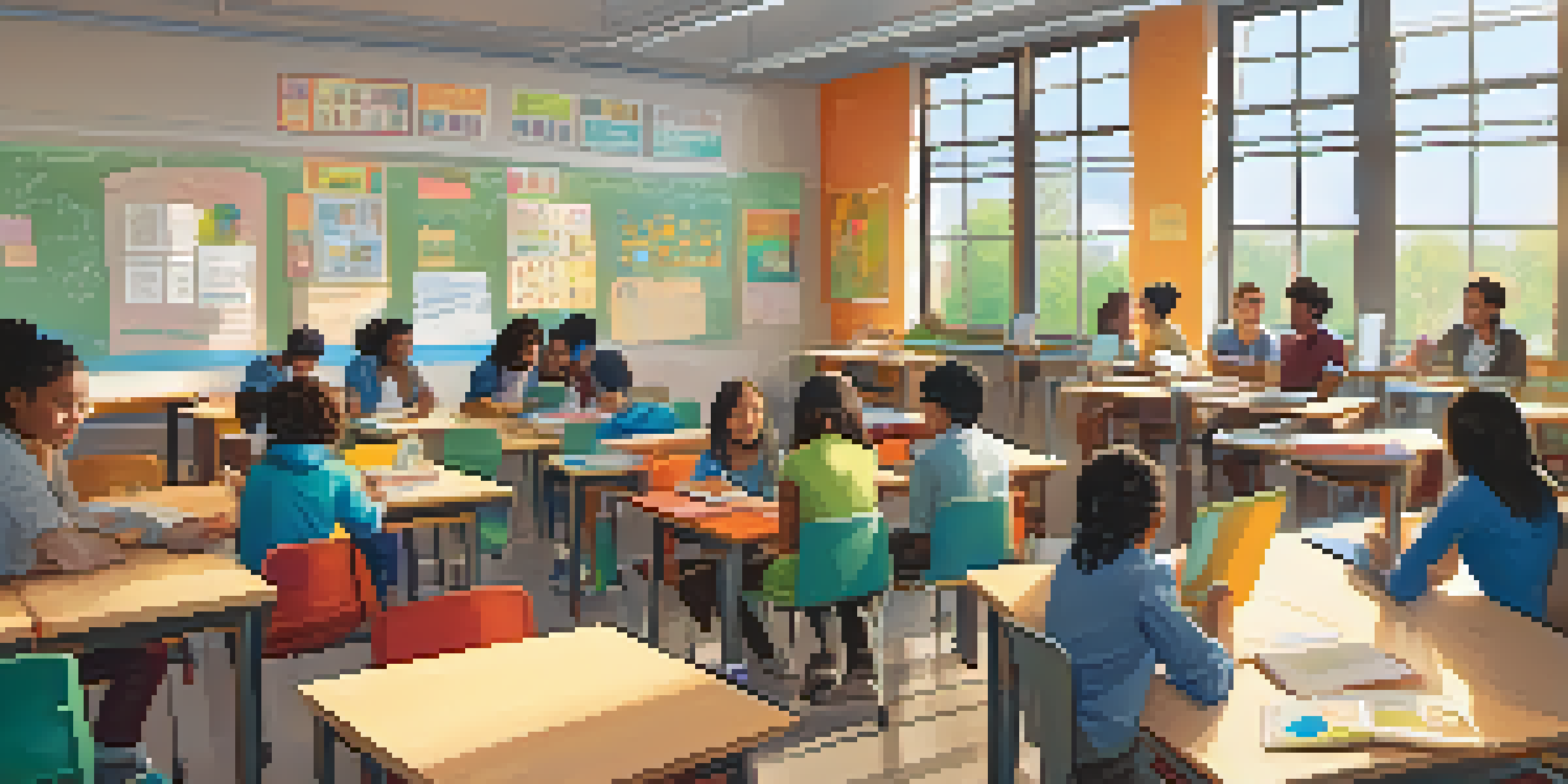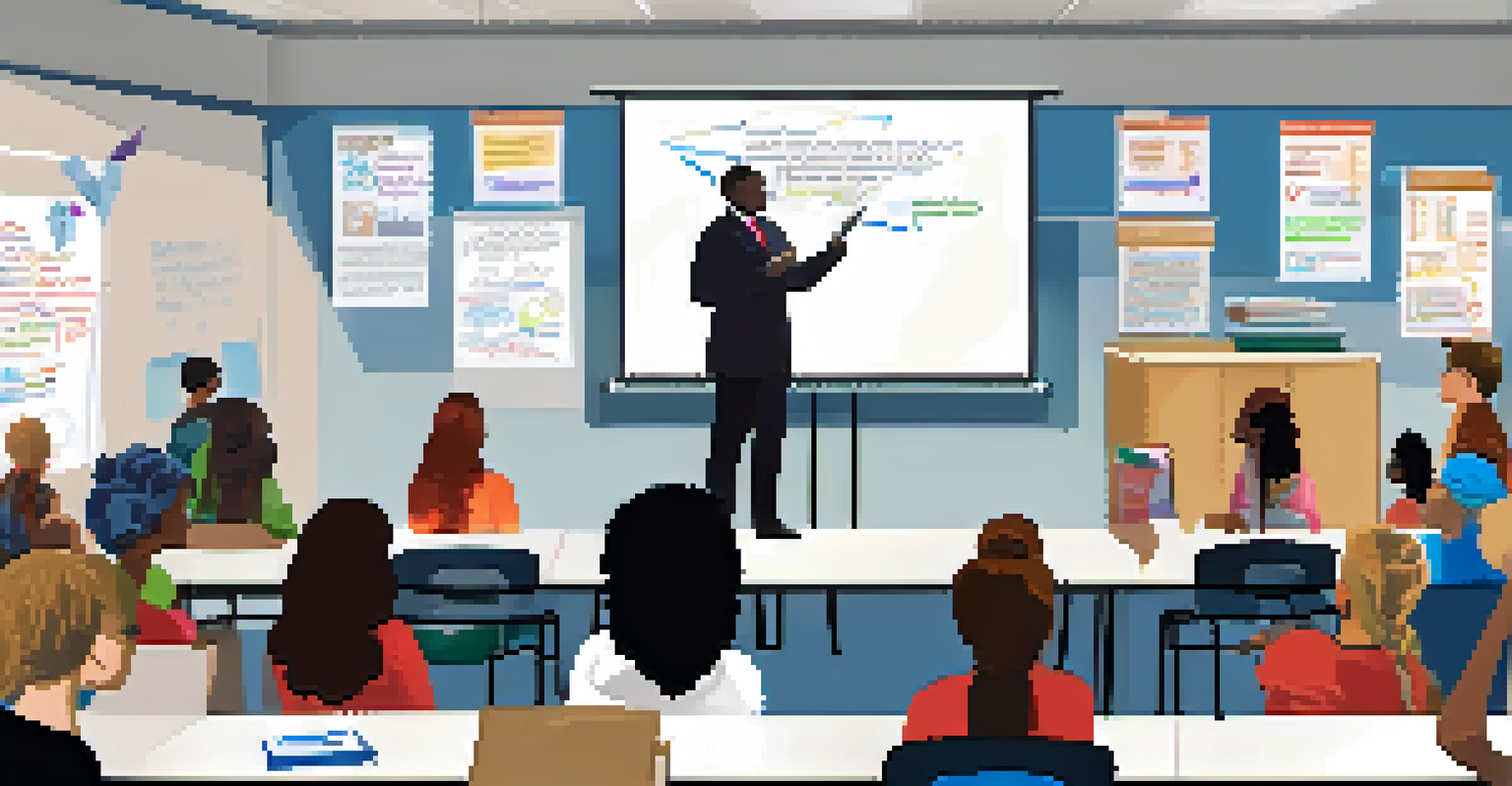OER and Critical Pedagogy: Rethinking Teaching Strategies

Understanding Open Educational Resources (OER)
Open Educational Resources, or OER, are teaching and learning materials that are freely available to use and adapt. This includes textbooks, videos, test items, and even entire courses. The goal of OER is to enhance accessibility and encourage collaborative learning by removing financial barriers.
Education is not the filling of a pail, but the lighting of a fire.
Imagine being able to access a wealth of knowledge without the hefty price tag of traditional textbooks. OER enables educators and students alike to access high-quality resources that can be customized to fit specific learning needs and contexts. This flexibility is crucial in today's diverse educational landscape, where one size rarely fits all.
By embracing OER, educators can foster a more inclusive environment that promotes engagement and innovation. It empowers both teachers and students to take ownership of their learning, making education a collaborative journey rather than a one-way transmission of information.
The Core Principles of Critical Pedagogy
Critical pedagogy is an educational approach that encourages students to question and challenge dominant social norms and injustices. It promotes critical thinking and emphasizes the importance of dialogue in the learning process. This approach seeks to empower students to become active participants in their education and advocates for social change.

Think of critical pedagogy as a way to transform the classroom into a vibrant space for debate and discussion. It’s not just about memorizing facts; it's about engaging with ideas and understanding their implications in the world. This approach encourages learners to reflect on their own experiences and relate them to broader societal issues.
OER Enhances Educational Accessibility
Open Educational Resources provide free, adaptable materials that eliminate financial barriers for students and educators.
Ultimately, critical pedagogy aims to cultivate critical consciousness among students, allowing them to recognize and address the inequalities they encounter. By integrating this approach into teaching, educators can inspire students to become informed, compassionate citizens who are equipped to tackle complex social issues.
The Intersection of OER and Critical Pedagogy
When OER and critical pedagogy come together, they create a powerful synergy that can reshape teaching strategies. OER offers diverse materials that can be adapted to explore critical themes and encourage inquiry. This combination allows educators to design curricula that not only inform but also inspire critical thinking and social engagement.
The only way to deal with the future is to function efficiently in the now.
Consider a classroom where students can access various resources to explore social justice topics from multiple perspectives. By utilizing OER, educators can provide students with the tools they need to analyze and critique the information presented. This encourages deeper engagement with the material and fosters a culture of questioning.
Furthermore, the collaborative nature of OER aligns perfectly with the principles of critical pedagogy. Students can contribute to and modify resources, creating a dynamic learning environment where their voices matter. This not only enhances their understanding but also reinforces their agency in the learning process.
Benefits of Integrating OER in Critical Pedagogy
Integrating OER into critical pedagogy practices offers numerous benefits for both educators and students. First and foremost, it promotes equity by ensuring all students have access to high-quality learning materials. This accessibility is crucial for fostering an inclusive environment that values diverse perspectives and experiences.
In addition, using OER can lead to enhanced engagement and motivation among students. When learners can choose resources that resonate with their interests and backgrounds, they're more likely to invest in their education. This personal connection not only enriches their learning experience but also encourages them to think critically about the content.
Critical Pedagogy Fosters Engagement
This educational approach encourages students to challenge norms and engage in meaningful dialogue, promoting active learning.
Finally, the integration of OER encourages collaborative learning among students and educators. By sharing resources and insights, everyone involved can contribute to a richer educational experience. This collaborative spirit aligns perfectly with the goals of critical pedagogy, creating a community of learners who support and challenge each other.
Challenges in Implementing OER and Critical Pedagogy
While the integration of OER and critical pedagogy is promising, it does come with its challenges. One significant hurdle is the digital divide, where not all students have equal access to technology or internet connectivity. This disparity can hinder the effectiveness of OER and limit the potential for critical engagement.
Moreover, some educators may feel overwhelmed by the vast array of OER available and struggle to curate appropriate resources for their specific teaching goals. It requires time and effort to sift through materials and select those that align with critical pedagogy principles. This can be particularly daunting for teachers who are already stretched thin.
Lastly, there may be resistance from traditional educational structures that favor conventional teaching methods. Changing the mindset of educators and institutions to embrace OER and critical pedagogy fully can take time. However, with continued advocacy and support, these challenges can be overcome, leading to a more equitable and engaging educational landscape.
Practical Strategies for Educators
To successfully integrate OER and critical pedagogy, educators can adopt several practical strategies. First, they should begin by familiarizing themselves with available OER platforms and resources. Knowing where to find quality materials can make the process of incorporating them into teaching much simpler and more effective.
Next, educators can design collaborative projects that encourage students to engage with OER critically. For instance, students could create their own OER materials based on their research or interests, promoting a sense of ownership and agency in their learning. This hands-on approach fosters deeper understanding and reinforces critical thinking skills.
Synergy Between OER and Critical Pedagogy
Integrating OER with critical pedagogy creates an inclusive environment that supports collaborative learning and critical thinking.
Finally, educators should cultivate a classroom culture that values dialogue and inquiry. Encouraging students to ask questions and challenge assumptions creates an environment where critical pedagogy can thrive. By integrating OER within this framework, educators can support students in becoming not just consumers of knowledge but active contributors to their learning.
The Future of OER and Critical Pedagogy
As we look to the future, the potential for OER and critical pedagogy to transform education is immense. With the ongoing advancements in technology and the growing emphasis on inclusivity, these approaches can reshape how we think about teaching and learning. They offer a pathway toward more equitable education that values diverse voices and perspectives.
Moreover, as more educators recognize the benefits of OER, we may see a shift in how educational materials are created and shared. Collaborative efforts among educators, institutions, and communities can lead to a wealth of resources that are not only accessible but also relevant to contemporary issues.

Ultimately, the future of education lies in our ability to adapt and innovate. By embracing OER and critical pedagogy, we can foster a generation of learners who are not only knowledgeable but also empowered to make a difference in their communities and the world.